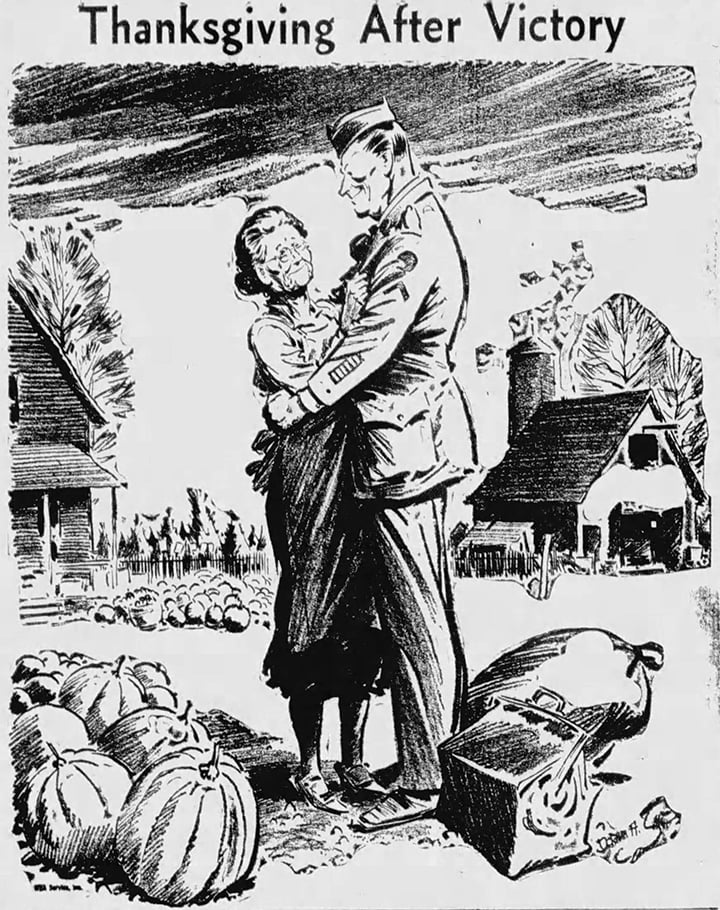By Jeff Rubin
Special to NKyTribune
Over 140 million Americans spent some $25.8 billion on Valentine’s Day gifts in 2024. On average that equates to approximately $186 per consumer. Not surprisingly, the top three expenditures were for candy (57%), greeting cards (40%), and flowers (37%) followed by dinner out (32%), jewelry (21%), and gift cards (20%).
This does not include the $1.5 billion pet owners spend on their pets annually or the $9.5 billion worth of unwanted Valentine’s Day gifts.
According to Candystore.com and the Society of American Florists, Valentine’s Day consumers purchase some 58 million pounds of chocolate and candy, with more transactions for flowers occurring on this day than on any other holiday.

In preparation, florists stock approximately 250 million roses, accounting for 83% of consumer purchases.
Additionally, parents spend an average of $12.02 for their children’s teachers and schoolmates, and 28% of women give Valentine’s Day flowers to their moms.
Who spends more?
Men spend almost twice as much as women on Valentine’s Day gifts, with those between the ages of 35 and 44 spending the most. In 2024, the average 35- to 44-year-old spent $137 on Valentine’s Day gifts for their partners, 34.5% more than the average American adult. In comparison, the average the average American aged 65 years and older budgeted just $60, 40.1% less than for all age groups.
How other countries celebrate Valentine’s Day
Currently, 30 other countries celebrate Valentine’s Day though not necessarily on the same day or in the same way as we do. Other cultures have unique twists such as carved wooden spoons, public weddings, Lucky pigs, etc. in celebration of the Day.
Some countries designate a day or a week of celebration featuring themes and traditions that go far beyond how love is typically expressed at home.
Themes of friendship, health, good harvests, the promotion of Indigenous products, joke letters, funny poems, children’s songs, pilgrimages, poets, adventure, and even parades for seniors are showcased in their traditions.
A rose by any other name
• Argentina sets aside a week in July as “Sweetness Week.”
• Brazil designates June 12 as “Dia dos Enamorados” (“Lovers’ Day”).
• In Bulgaria, February 14 is known as “San Trifon Zarezan,” or “Winemakers’ Day.”
• In Colombia and Guatemala, Valentine’s Day is called the Day of Love and Friendship. Friends give anonymous gifts, and Guatemala City residents participate in a parade for senior citizens while wearing bright colors and traditional Maya attire.
• In Ghana, February 14 is National Chocolate Day, an initiative introduced by the government in 2007. Ghana, being one of the world’s largest producers of cocoa, celebrates with concerts, performances, and special chocolate-themed menus in restaurants.
• In Mexico, February 14 is called the Day of Love and Friendship, where people exchange flowers, stuffed animals, balloons, and cards.
• In Spain, Valentine’s Day is known as the Feast of St. Dionysus, celebrated on October 9, featuring parades and festivals.
Food for thought
In Japan, February 14th is all about chocolate. Some estimates suggest that Japanese chocolatiers make half of their yearly income from Valentine’s Day sales.
In England, many people bake Valentine’s buns with plums, raisins, or caraway seeds, harkening back to a celebration of a good harvest.
In Germany, heart-shaped ginger cookies with love messages written in icing are also popular.
In Italy, couples give exchange gifts like the baci perugina on Valentine’s Day, These are small boxes of hazelnut-filled chocolate kisses, containing a love note written in five different languages.
In Denmark and Norway, friends and lovers exchange all manner of “lover’s cards.” One such tradition is called gaekkebrev, where men send anonymous “joke letters” containing a funny poem or rhyme written on intricately cut paper. If the recipient guesses the sender, she earns an Easter egg from the sender later in the year.
Countries like the Philippines and Thailand take Valentine’s Day in a completely different direction. In the Philippines for instance, the government sponsors mass Valentine’s Day marriage ceremonies for dozens, hundreds, or even thousands of couples at a time. In Thailand, couples often take risks with skydiving, bungee jumping, and underwater weddings becoming common traditions.
Valentine’s Day in decline
Why, then, do only 53% of U.S. adults say they will celebrate Valentine’s Day this year, despite the many creative and inclusive ways to express its meaning? A recent survey conducted by Tinder, a leading dating app for millennials, revealed that 90% of younger singles say finding a partner is now harder than ever. There is little doubt that the media, the message, the image, and the expectations of Valentine’s Day have contributed to its decline as a meaningful expression of love in America.
Additionally, many people associate the holiday with negative emotions, as it often highlights the absence of a romantic partner for those who are single, divorced, grieving, or widowed, and those in unstable or non-traditional relationships. In these situations, feelings of loneliness and depression are not uncommon. Some studies even suggest that Valentine’s Day has the highest rate of suicide among the young, as well as the old. The Centers for Disease Control reports that suicide prevention hotlines receive twice as many calls on Valentine’s Day than at any other time of the year.

When Valentine’s Day is difficult
Growth Therapy suggests several ways to lower your stress concerning Valentine’s Day depression and discover new ways to cope, learn, and grow.
Self-compassion and self-care
Practicing self-compassion and self-care can make a significant difference. Remind yourself that what you’re feeling is valid, while also trying to avoid rumination or dwelling. Activities that bring you into the present can help you avoid negative thought spirals. Try journaling, meditating, or spending time on hobbies that bring you joy and relaxation. Treat yourself with kindness and understanding, avoiding self-criticism that can worsen feelings of loneliness or inadequacy.
Reframing the meaning of Valentine’s Day
Shift the focus from romantic love to friendship—you can also shift the meaning to self-love, community, or gratitude. Celebrate the day by engaging in activities that promote self-care and well-being, such as practicing gratitude, volunteering, or spending quality time with friends and family.
How to celebrate Valentine’s Day alone
Spending Valentine’s Day alone can be a great opportunity to focus on yourself. Not just personal growth and empowerment, but simply by doing the things that you want to do. Plan a date with yourself that includes your favorite restaurant or meal, your favorite movie or show, and the activities and timing that you love the most.
Setting healthy boundaries with social media
Limit exposure to platforms that trigger negative feelings and comparisons. You could even remove social media apps from your phone on Valentine’s Day and the days leading up to it—think of it as a “digital detox” in the name of self-care. If removing apps feels like too much, you can curate your online environment by following accounts that promote positivity, inspiration, and self-acceptance.
Ask for support
Don’t hesitate to seek support from a trusted friend, family member, or supportive community. Talking to others can offer comfort and perspective. If feelings of loneliness or stress become overwhelming, consider reaching out to a mental health professional for guidance and support. Remember, it’s okay to ask for help when you need it.
Learning from one another
There is much to be gained when we recognize that Valentine’s Day can embrace diversity and inclusion. It can be expressed in a variety of meaningful, interactive, and creative ways, demonstrating respect and appreciation for all age groups.
Ten meaningful Valentine’s Day ideas for seniors
Whether they’re parents, grandparents, neighbors, or dear friends, seniors deserve to feel truly cherished on this special day. Here are ten creative and heartfelt ideas from SeniorCenters.com to help make Valentine’s Day extra memorable for a senior you love.
1) Re-colorize Cherished Photos with AI
2) Create a Valentine’s Day Time Capsule
3) Plan a Virtual Reality Trip
4) Host a Digital Cooking or Baking Session
5) Organize a Nostalgic Music Night
6) Send a “Memory Lane” Box
7) Host a Paint-and-Sip Evening (Non-Alcoholic or Otherwise)
8) Volunteer Together for a Cause They Love
9) Curate a Personal Scrapbook or Memory Journal
10) Arrange a Relaxing Spa Day at Home
In a recent article in Psychology Today, Jessica Koehler Ph.D. writes, “Love is often described as the most powerful force in the universe, influencing our thoughts, behaviors, and well-being. Love shapes our lives in ways we may not always recognize.”
Raj Raghunathan Ph.D., another contributor to Psychology Today sees love as “One of our most basic and fundamental needs.” However, in our pursuit of the need to be loved, Raghunathan says, most of us fail to recognize that we have a parallel need: the need to love and care for others. Hardwired, and universal, he sees both as a powerful determinant of happiness.
He goes on to say that the messages we are routinely exposed to suggest that our happiness lies in being the recipient of others’ attention, love, and respect, rather than in being the donors of attention, love, and respect.
A Call to Action
Valentine’s Day presents a unique opportunity to celebrate love in all its forms.
However, the decline in Valentine’s Day celebrations in the U.S. highlights a need to reframe and reclaim the day’s true essence.
With Valentine’s Day nearing, let’s commit to spreading a year-round message.
• Embrace Diversity: Recognize and appreciate the various ways love can be celebrated. Share stories and traditions from different cultures to inspire a more inclusive approach to Valentine’s Day.
• Promote Self-Love and Care: Use this day to practice self-compassion and self-care. Treat yourself with the kindness and respect you deserve, and encourage others to do the same.
• Foster Connections: Reach out to friends, family, and community members. Organize events, virtual or in-person, that promote togetherness and support.
• Support Mental Health: Be mindful of those who might struggle with loneliness or depression on this day. Offer a listening ear and direct them to resources if they need help.
• Celebrate All Ages: Ensure that seniors and people of all age groups feel cherished and valued. Engage in activities that honor their contributions and experiences.
By embracing these principles, we can turn Valentine’s Day into a celebration that truly reflects the depth and breadth of love. Whether it’s through small acts of kindness, grand gestures, or simply being present for one another, we have the power to make a meaningful impact both now and in the future.
Join me by sharing your ideas and experiences on how to celebrate this day meaningfully.
Together, we can create a world where love is celebrated every day, in every way.
Wishing all of us a Valentine’s Day full of love and self-expression.
Jeff Rubin is a nationally recognized speaker, author, and adviser on community and aging issues, having spent over 20 years as a director and facilitator of community service programs at the local, state, and national levels. He lives in Berea. An advocate for “Age-friendly” and “Livable” communities, Rubin is the author of Wisdom of Age: Perceptions and insights from one generation to another. Jeff can be reached at: www.jeff@wisdomofage.net





















